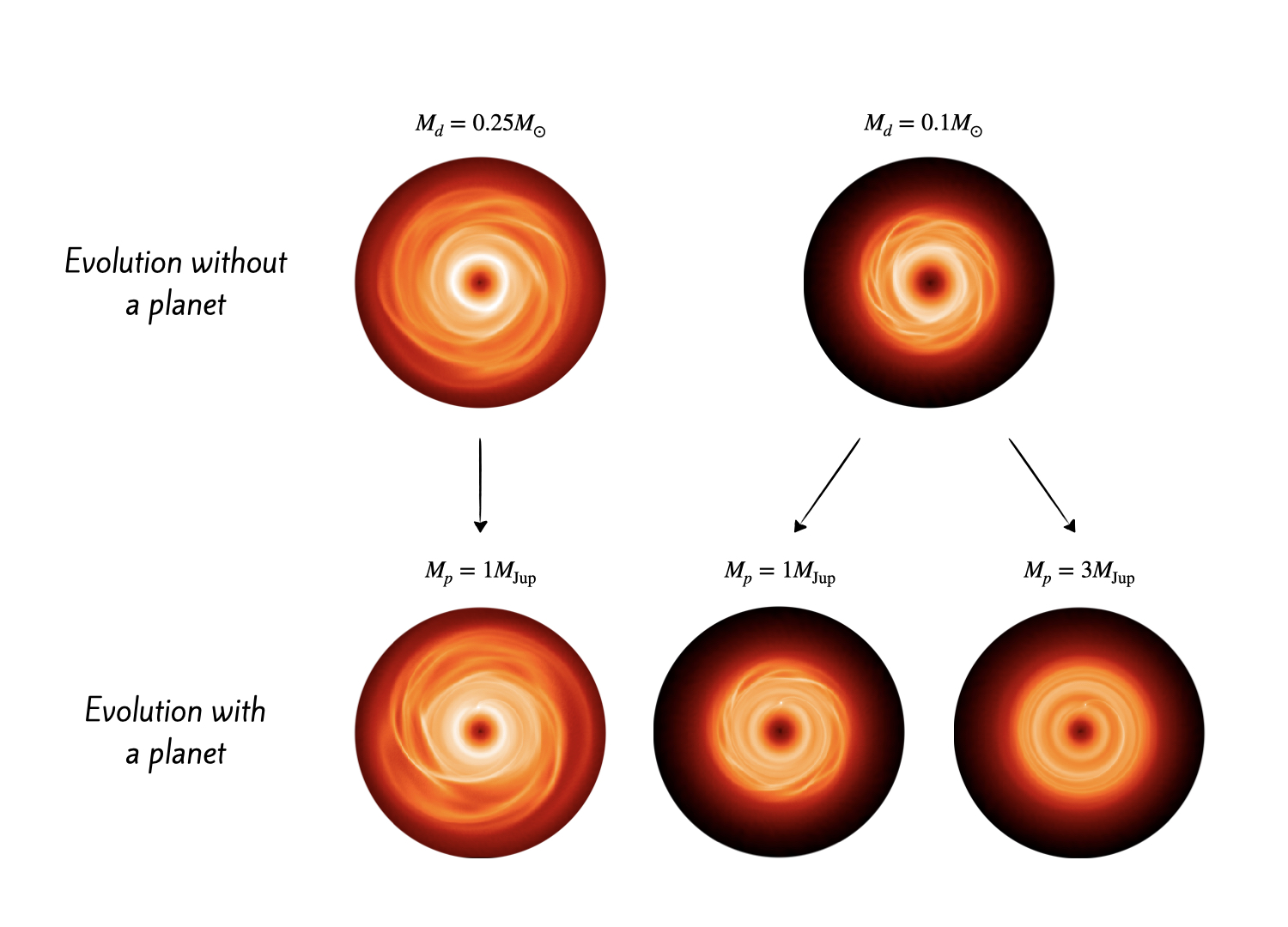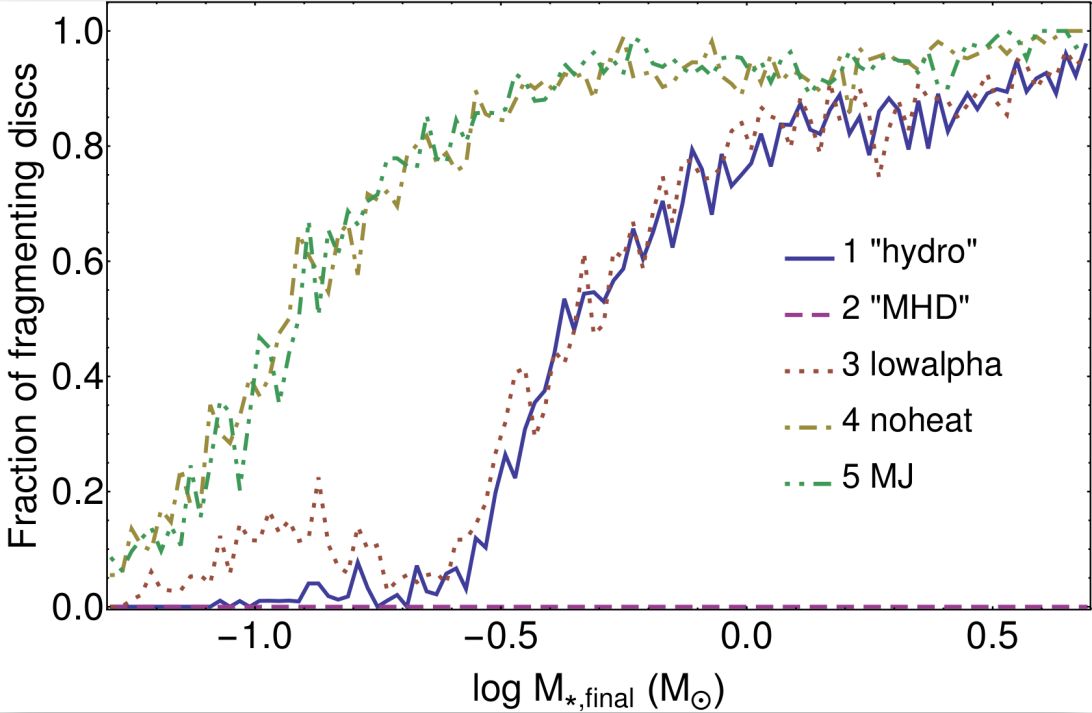Orals: Tue, 20 Sep, 10:00–11:30 | Room Andalucia 3
Chairpersons: Antonio Garufi, Paola Pinilla, Feng Long
10:00–10:10
|
EPSC2022-88
|
ECP
10:30–10:50
|
EPSC2022-308
|
ECP
|
solicited
|
MI
11:00–11:10
|
EPSC2022-519
11:20–11:30
|
EPSC2022-775
|
ECP
Posters: Mon, 19 Sep, 18:45–20:15 | Poster area Level 2
L2.62
|
EPSC2022-694
The properties of disc-instability protoplanets embedded in their parent discs
(withdrawn)



 Fig. 1: Fraction of fragmenting discs as a function of the final stellar mass for different parameters. When an infall model motivated by non-ideal MHD simulations is applied, no fragmentation occurrs. In contrast, infall informed by radiation hydrodynamic simulations leads to a substantial fraction of discs fragmenting, especially at higher masses.
Fig. 1: Fraction of fragmenting discs as a function of the final stellar mass for different parameters. When an infall model motivated by non-ideal MHD simulations is applied, no fragmentation occurrs. In contrast, infall informed by radiation hydrodynamic simulations leads to a substantial fraction of discs fragmenting, especially at higher masses.